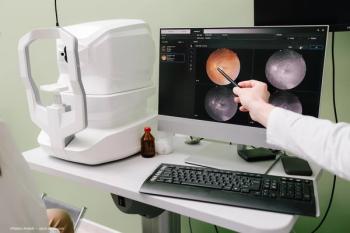
Part 3: Looking back at 50 years of innovation in ophthalmology
To mark Ophthalmology Times' 50th anniversary, we invited top experts to reflect on the most significant innovations in ophthalmology over the past five decades.
In celebration of Ophthalmology Times' 50th anniversary, we asked leading experts in the field what they see as the biggest innovation in ophthalmology in the past 5 decades.
Video Transcript:
Editor's note: The below transcript has been lightly edited for clarity.
Roger Goldberg, MD, MBA:
Ophthalmology has gone through just, I don't even know the right word to describe how incredible the changes have been in the last 50 years. I don't know, phacoemulsification, cataract surgery, you know, a huge sea change in the 80s and 90s, with the development of that technology. OCT and our ability to image the retina and other parts of the eye on, you know, frankly, down to the cellular level. Anti-VEGF therapy for wet macular degeneration. Those are the 3 that would come to mind as probably the 3 biggest changes in the last 50 years.
Anisha Kasi:
I think my gut answer is OCT, optical coherence tomography, might be a common answer, but I think that it totally changed the landscape of the way that we look at the retina, the layers of the retina, and have an understanding of retinal pathogenesis. I think that I'm excited for what's to come. I know there's a lot of AI that's overlapping with OCT, so I'm excited to see what that means for the future of diagnosis and treatment.
Paul Hammond, OD, FAAO:
As far as diagnostics go, I would have to say the OCT. The development of OCT to be able to detect glaucoma and other diseases that previously would go undetected until there was severe vision loss, and to be able to detect and intervene at a much earlier time, I think, has made a huge difference in saving vision in the last 50 years.
Mark Bullimore, MCOptom, PhD:
In terms of the last 50 years and innovations, I'm going to be very self centered and very recency biased. I think the thing that has changed in the last 10 years, and will continue to change in the next 20 years, is how we approach a myopic child. When I was studying 45 years ago, we regarded myopia as a benign refractive condition that we would correct with spectacles or contact lenses, and of course, more recently, with refractive surgery. We now understand that myopia is a leading cause of uncorrectable visual impairment, and the abnormal axial elongation that occurs in a myopic child during their youth, leads to an increased risk of diseases like myopic macula degeneration and, of course, then uncorrectable visual impairment later in life. So that is, I think, one of the big public health challenges of our time.
Newsletter
Don’t miss out—get Ophthalmology Times updates on the latest clinical advancements and expert interviews, straight to your inbox.













































